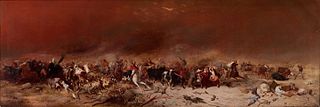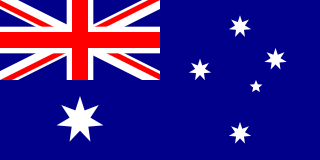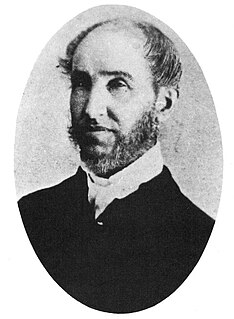Related Research Articles

The human history of Western Australia commenced between 40,000 and 60,000 years ago with the arrival of Indigenous Australians on the northwest coast. The first inhabitants expanded across the east and south of the continent.

The Swan River Colony, also known as the Swan River Settlement, or just Swan River, was a British colony established in 1829 on the Swan River, in Western Australia. This initial settlement place on the Swan River was soon named Perth, and it became the capital city of Western Australia.

Yagan was an Aboriginal Australian warrior from the Noongar people. He played a key part in early resistance to British colonial settlement and rule in the area surrounding what is now Perth, Western Australia. Yagan was pursued by the local authorities after he killed Erin Entwhistle, a servant of farmer Archibald Butler. It was an act of retaliation after Thomas Smedley, another of Butler's servants, shot at a group of Noongar people stealing potatoes and fowls, killing one of them. The government offered a bounty for Yagan's capture, dead or alive, and a young settler, William Keats, shot and killed him. Yagan's execution figures in Australian history as a symbol of the unjust and sometimes brutal treatment of the indigenous peoples of Australia by colonial settlers. He is considered a hero by the Noongar.

Albany Highway links Western Australia's capital city Perth with its oldest settlement, Albany, on the state's south coast. The 405-kilometre-long (252 mi) highway travels through the southern Wheatbelt and Great Southern regions, and is designated State Route 30 for most of its length. Outside of Perth the highway is predominately a sealed, single carriageway with regular overtaking lanes in some undulating areas. Albany Highway commences at The Causeway, a river crossing that connects to Perth's central business district. The highway heads south-east through Perth's metropolitan region, bypassed in part by Shepperton Road and Kenwick Link, and continues south-eastwards through to Albany. It intersects several major roads in Perth, including the Leach, Tonkin, Brookton, and South Western highways. The rural section of Albany Highway connects to important regional roads at the few towns and roadhouses along the route, including Coalfields Highway at Arthur River, Great Southern Highway at Cranbrook, and Muirs Highway at Mount Barker.
The Swan Valley is a region in the upper reaches of the Swan River between Guildford and Bells Rapids, Western Australia. It is bordered to the east by the Darling Scarp. Both Ellenbrook and Jane Brook lie within the region and discharge into the Swan River. There are seven suburbs within the region: Baskerville, Belhus, Caversham, Henley Brook, Herne Hill, Millendon and West Swan. It is part of the City of Swan local government area.

Mount Eliza is a hill that overlooks the city of Perth, Western Australia and forms part of Kings Park. It is known as Kaarta gar-up and Mooro Katta in the local Noongar dialect.

Kulin is a town in the eastern Wheatbelt region of Western Australia, approximately 280 km from Perth. It is the main town in the Shire of Kulin.

John Nicol Drummond (1816–1906) was an early settler in Western Australia. He became the colony's first 'Inspector of Native Police', and helped to explore the Champion Bay district before becoming one of the district's pioneer pastoralists.
James Ronald Chi was an Australian composer, musician and playwright. His best known work is the 1990 musical Bran Nue Dae which was adapted for film in 2009.

William Mitchell was a Church of England priest who was the second ordained person, after The Rev Louis Giustiniani to provide religious services in the Swan Valley area of the Swan River Colony. He worked in the Swan Parish for over 20 years before moving to Perth to take up a position working with convicts and prisoners in the Perth Gaol in Beaufort Street.

The Pinjarra massacre, also known as the Battle of Pinjarra, is an attack that occurred in 1834 at Pinjarra, Western Australia on an uncertain number of Binjareb Noongar people by a detachment of 25 soldiers, police and settlers led by Governor James Stirling. Stirling estimated the Binjareb present numbered "about 60 or 70" and John Roe, who also participated, at about 70–80, which roughly agree with an estimate of 70 by an unidentified eyewitness.

Roelands is a town in the South West region of Western Australia on the South Western Highway, between Brunswick Junction and Bunbury. At the 2011 census, Roelands had a population of 620.
This is a timeline of Aboriginal history of Western Australia.

William Leonard Grayden is an Australian former politician. He was a member of parliament across six decades, serving in the Western Australian Legislative Assembly and the Australian House of Representatives (1949–1954). A World War II veteran, he served as a Liberal with the exception of a period as an independent for six years. Grayden was a backbencher in federal parliament, but later held ministerial office in the state government of Charles Court. His brother David and grandfather Nat Harper were also members of parliament.
Thomas Watson was a surveyor and early settler of the Swan River Colony in what is now Western Australia.
William Harris (1867–1931) was an early Western Australian activist for Aboriginal civil rights. He has been called "the most significant voice of a generation with the education and social standing to assert their rights as British subjects".

William Snell Chauncy was an English civil engineer responsible for a number of important engineering works including the first steam railway opened in Australia.
Chauncy is both a given name and a surname. Notable people with the name include:

Yued is an region inhabited by one of the fourteen groups of Noongar Aboriginal Australians who have lived in the South West corner of Western Australia for approximately 40,000 years. Aboriginals in the Yued region share many similarities with the Noongar culture and the Yued language is a dialect of the main Noongar language.
The Reverend Dr Louis Giustiniani was the first missionary to the Swan River Colony. He was zealous in defending the interests of aborigines but alienated the colony and was removed from office.
References
- ↑ Bush, Fiona. "Philip Lamothe Snell Chauncy". Design & Art Australia Online (DAAO). Retrieved 7 October 2018.
- ↑ Izett, EK 2014, 'Breaking new ground: early Australian ethnography in colonial women's writing', Doctor of Philosophy.
- ↑ "Chauncy Spring". inHerit - State Heritage Office. wa.gov.au. Retrieved 7 October 2018.